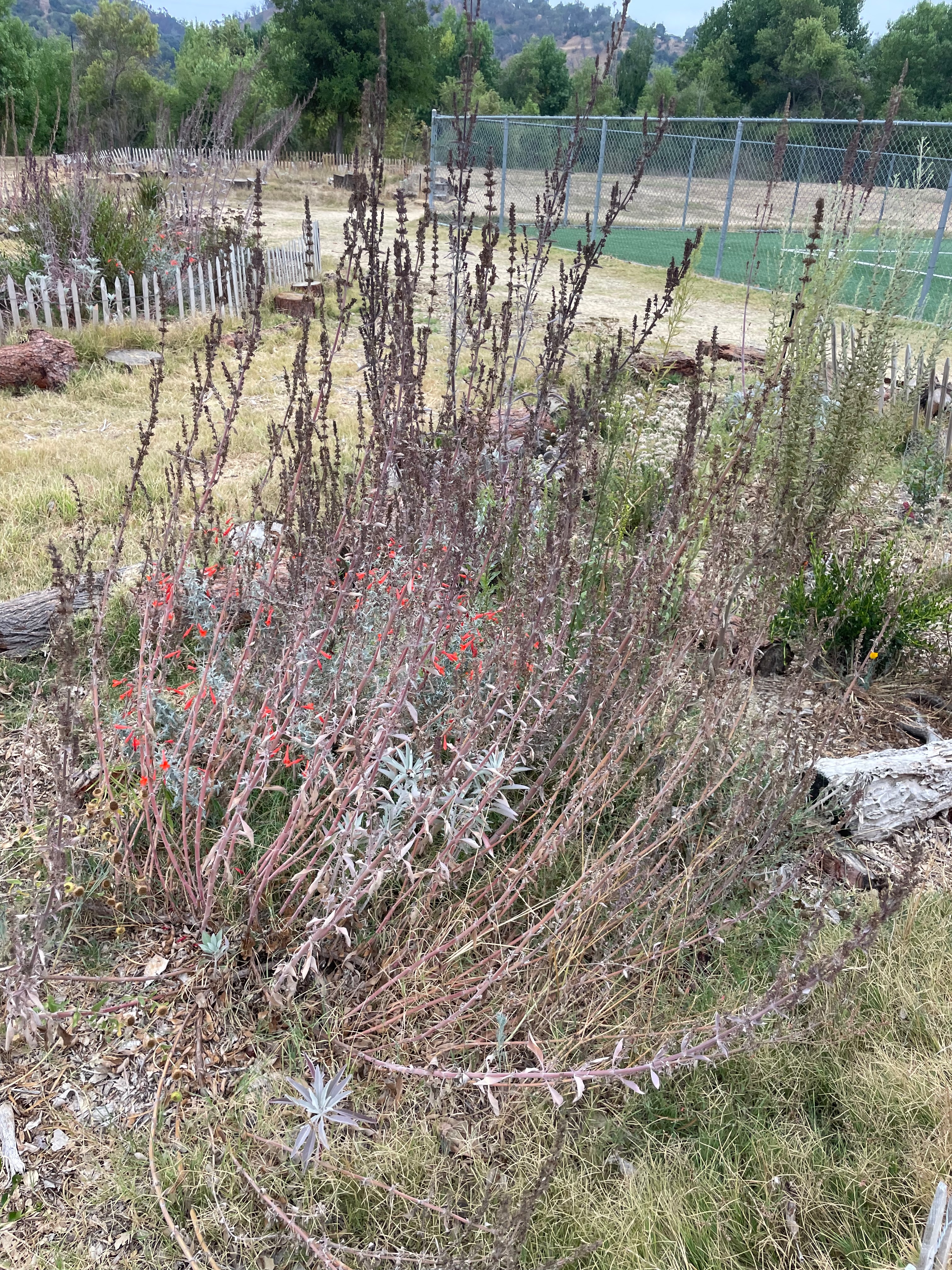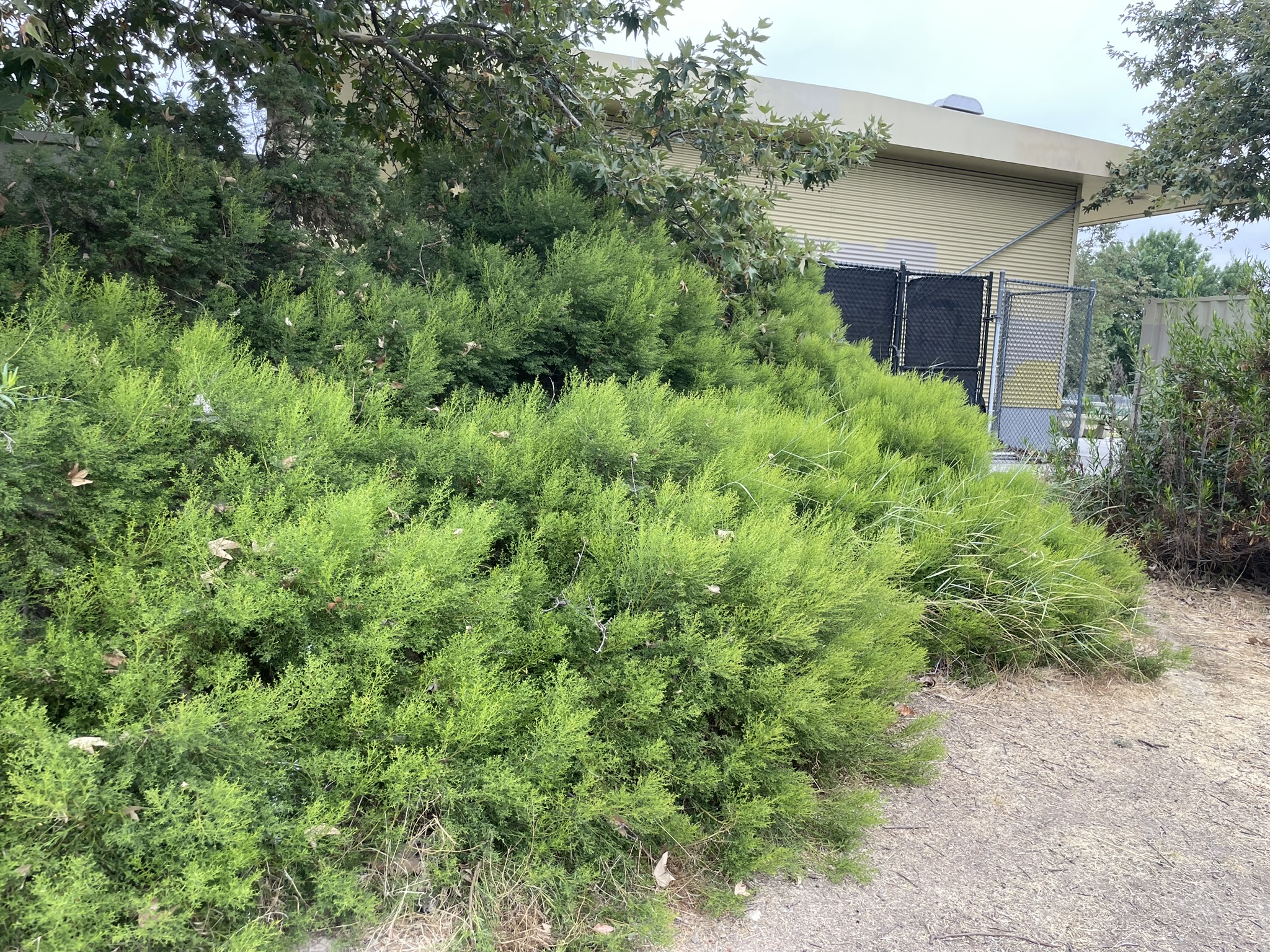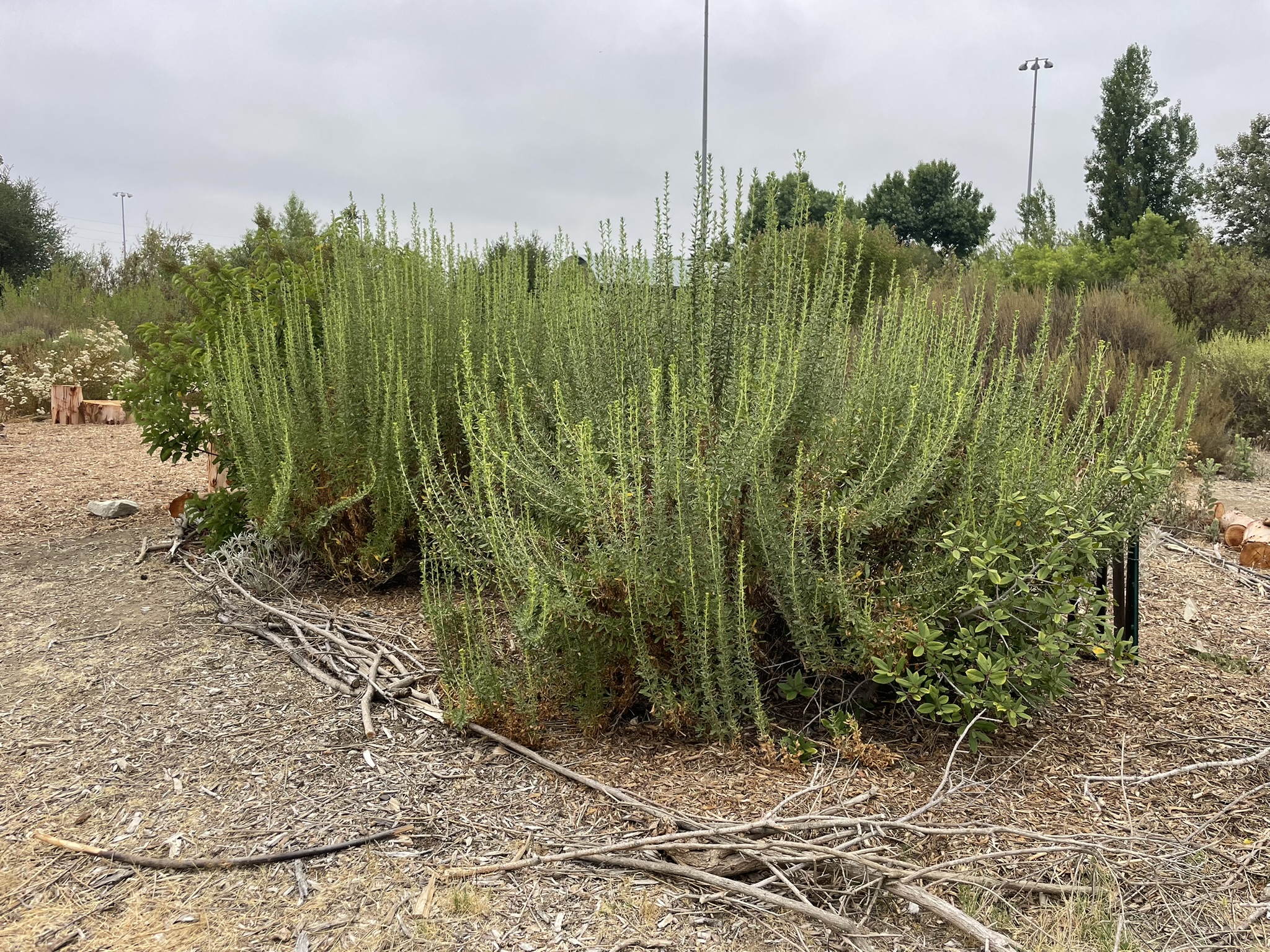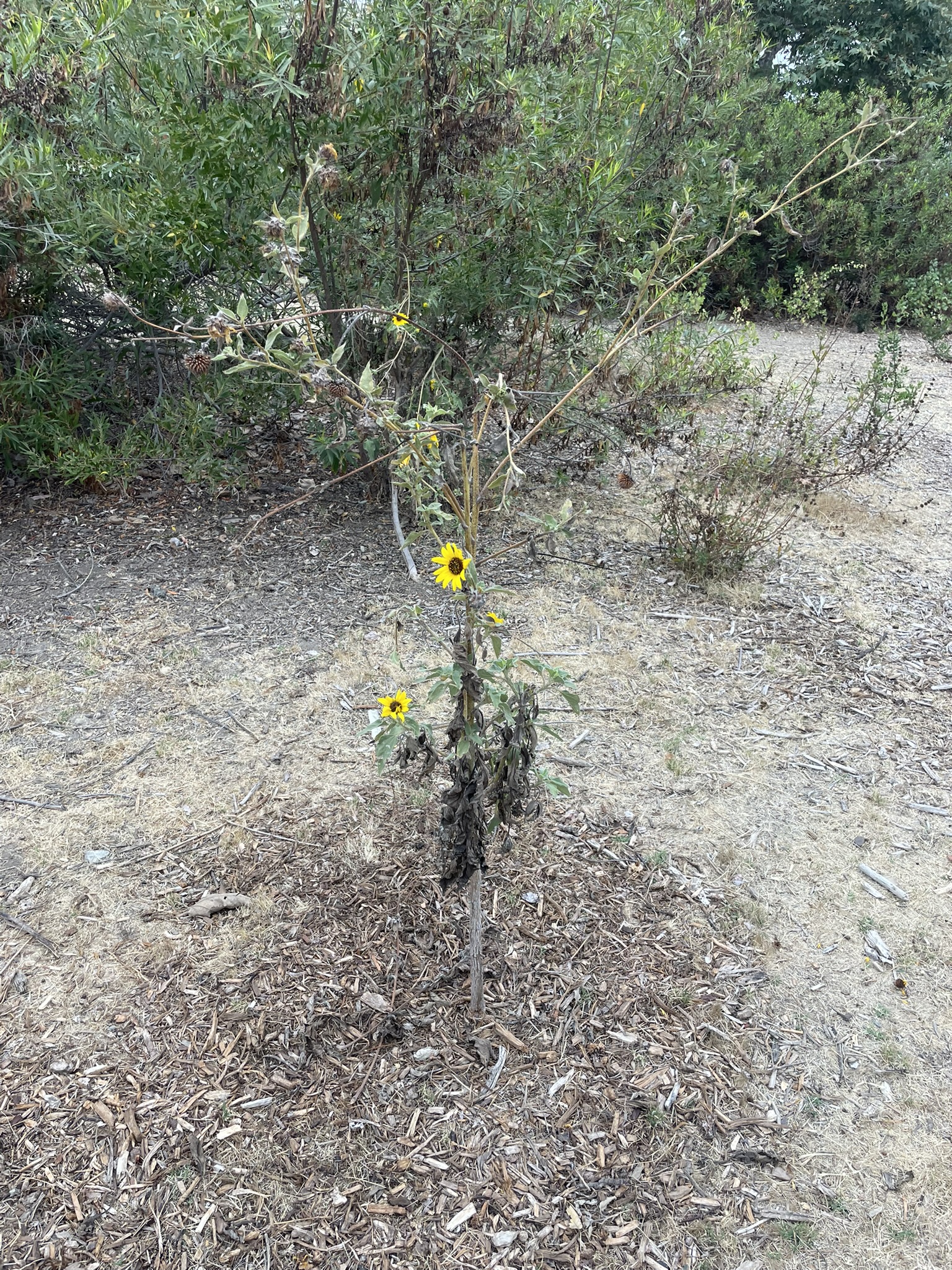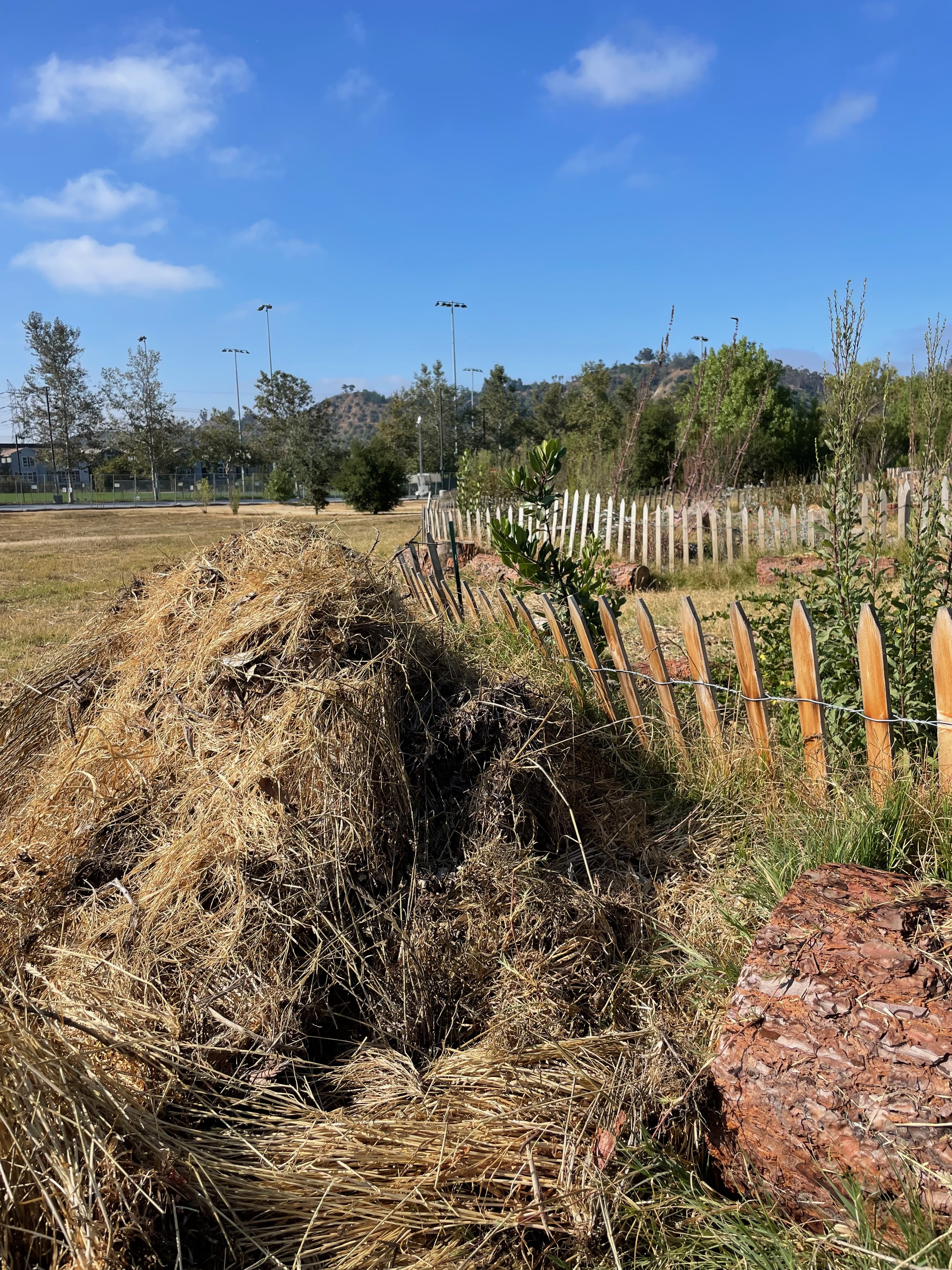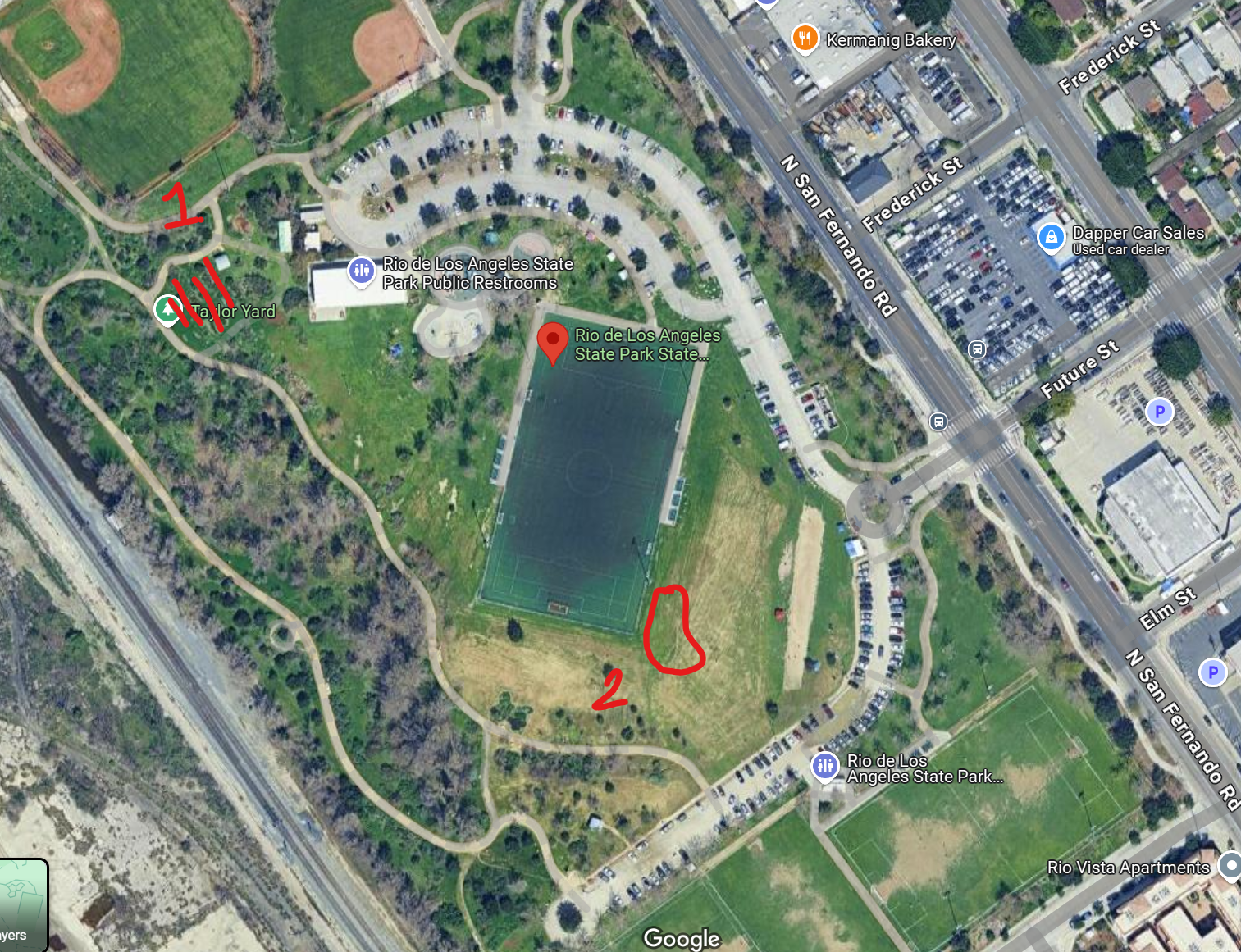
HEAVY HITTERS
Rio de Los Angeles Test Plot
By Tom Hurst
DATE: July 27 2025
Overview
On an overcast Sunday, I started an informal itinerary of successful species at the Rio de Los Angeles Test Plots. This living document is dubbed Heavy Hitters. We will maintain this evolving record of change at the site, focusing first on individuals before considering future categorization. I hope this document helps inform the ongoing restoration efforts at Rio de Los Angeles State Park. It is also fun to record the wellbeing of plants we care about.
Observations
Test Plot 1: The dense shrubs at Rio de Los Angeles thrive in the early summer sun. Hardy plants produce expectant buds, including Baccharis pilularis (Coyote Bush) and Isocoma menziesii (Coastal Goldenbush). Rabbits shuffle between them. The proud structure of Malosma laurina (Laurel Sumac) and Heteromeles arbutifola (Toyon) sets them apart from the crowd. Their branches shelter smaller species. The Plot is densely planted and there is a sense of communion. Change is also visible through death; many of the staggered plantings of Encelia californica (California Brittlebrush) failed while Monardella villosa (Coyote Mint) is dry and defeated.
Test Plot 2: At the younger Plot, Ceanothus thrysiflorus and Elymus condensatus (Giant Wildrye) break free of their gopher cages, their wire pants. Spent Salvia apiana (White Sage) stalks are relics of a warm Spring. In the throes of immaturity, Epilobium canum (California Fuschia) competes with Solidago californica (California Goldenrod). Their exchanges spill over the picket fence to a pile of harvested weeds. These weeds were cut low after the rain before they went to seed; their roots remain in place to minimize soil disturbance. This pile, we hope, provides habitat for insects. The ground feels cooler here than in Test Plot 1.
Landcare
- Water immature plants strategically through the summer without watering mature species unnecessarily.
- Cut back lone weeds (though few remain after successful volunteer outings).
- Evaluate the relative success of species to inform planting decisions for the fall.
- Prune struggling species in late summer to encourage regrowth.
- Keep mulch to an absolute minimum.
Brief Bio
Tom studies Landscape Architecture and works as a gardener. As a design student, he believes in the role of ecological regeneration to help rehabilitate public and private spaces. He is interested in design that makes the process of change visible, and the landscape legible. His voluntary work at Test Plot: Rio de Los Angeles is a manifestation of use, time, and connection. His favorite plant this month is Baccharis pilularis.

